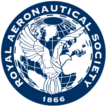Vital research and testing blended-wing bodies. Bill Read concludes his report on last week’s ICAS conference in Nice.
While we were able to report on some of the highlights covered by ICAS speakers over the four days of the conference, there were many more subjects which there was not time to include. Among these were a large number of papers on the more technical aspects of aerospace, such as aerodynamics, systems design, aeroelasticity, flight optimisation, wave vortices and systems architecture.
Although these subjects may not sound as exciting as new aircraft concepts and operations, they are nevertheless vital to the background research needed for new designs to become reality. For example, a presentation from EADS Innovation Works on Thursday looked at the problem of how a future blended-wing body (BWB) aircraft could use flight control systems to cope with the problem of wind gusts on such a large wing planform. Even though an actual BWB passenger or cargo aircraft may still be decades away – researchers are already busy working on how such designs would fly and operate.
In another paper, researchers from California Polytechnic State University described an on-going project to test a ten-foot wingspan hybrid wing-body in a wind-tunnel. The AMELIA model will be fitted with scale engines with noise simulators attached to the top of the wings and one of the aims of the Cal Poly project is to see what effect different pylon lengths might make to noise both on the ground and in the aircraft.
Although the presentations formed an important part of the conference, an even more key aspect of the event was the ‘networking’ opportunities that it gave to the participants to meet and talk to other people working in their research areas and other subjects. At the end of each presentation there were questions and comments from researchers around the world who were interested in learning and sharing information.
In conclusion therefore, the ICAS conference provided a fascinating glimpse of the huge amount of work being done all around the world into different aspects of aerospace – not just on future designs but also tackling the current problems of increasing efficiency and reducing CO2 emissions. For those interested in learning more about the subjects covered, there will be a full-length article in the November issue of Aerospace International. A look at the ICAS website is also recommended and the next meeting is scheduled in two years time on 23-28 September in Brisbane, Australia, followed by a meeting in St Petersburg in 2014.
And finally
Despite all the the futuristic aerospace technology showcased this week even the most modern airliner can fail to get off the ground when faced with a national transport strike across the whole of France - an event that led to this correspondent wishing that the personal air transportation vehicle proposed in one session this week be invented quickly.







The Blended-Wing Body aircraft has been illustrated often. There has not been any mention about the structural aspect of this configuration, especially in respect the pressurized cabin area. Would the area be divided by a series of tubular structures and a weight penalty?